#Modern western wear for women
Explore tagged Tumblr posts
Text
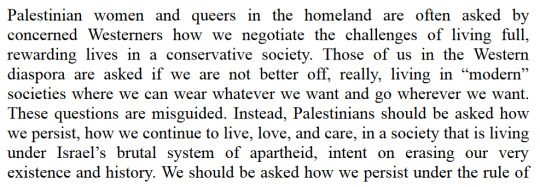
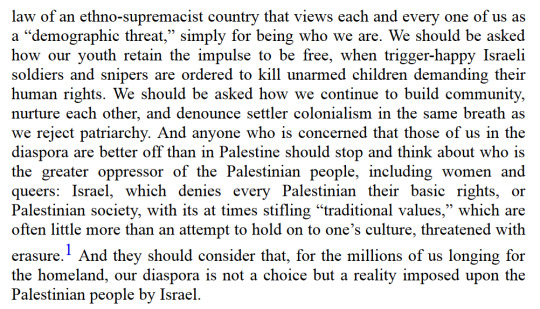
Multiple Jeopardy Gender and Liberation in Palestine
by Nada Elia
[ID: "Palestinian women and queers in the homeland are often asked by concerned Westerners how we negotiate the challenges of living full, rewarding lives in a conservative society. Those of us in the Western diaspora are asked if we are not better off, really, living in "modern" societies where we can wear whatever we want and go wherever we want. These questions are misguided. Instead, Palestinians should be asked how we persist, how we continue to live, love, and care, in a society that is living under Israel's brutal system of apartheid, intent on erasing our very existence and history. We should be asked how we persist under the rule of law of an ethno-supremacist country that views each and every one of us as a "demographic threat," simply for being who we are. We should be asked how our youth retain the impulse to be free, when trigger-happy Israeli soldiers and snipers are ordered to kill unarmed children demanding their human rights. We should be asked how we continue to build community, nurture each other, and denounce settler colonialism in the same breath as we reject patriarchy. And anyone who is concerned that those of us in the diaspora are better off than in Palestine should stop and think about who is the greater oppressor of the Palestinian people, including women and queers: Israel, which denies every Palestinian their basic rights, or Palestinian society, with its at times stifling "traditional values," which are often little more than an attempt to hold on to one's culture, threatened with erasure. And they should consider that, for the millions of us longing for the homeland, our diaspora is not a choice but a reality imposed upon the Palestinian people by Israel." End ID]
3K notes
·
View notes
Note
If the coats with hoods aren’t historically accurate, what coats did Chinese people wear prior to the modern period?
Hi! Thanks for the question, and sorry for taking ages to reply!
By "coats with hoods", I assume you're referring to the doupeng/斗篷 (cloak/cape) commonly seen in modern hanfu and guzhuang (drama costumes), like the one below (x):
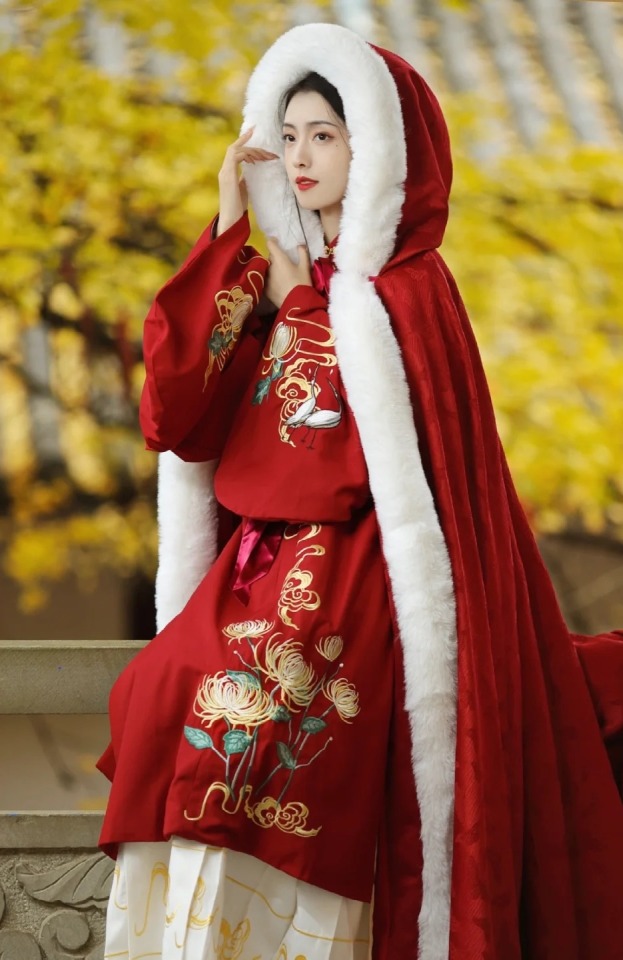
Chinese people did wear doupeng prior to the modern period, along with other kinds of coats. However, as I mentioned in my post here, historical Chinese doupeng did not have hoods attached to the cloak/cape. That is why many modern doupeng aren't considered historically accurate - because they have hoods attached. Below are examples of more historically accurate, hoodless doupeng (1/2):
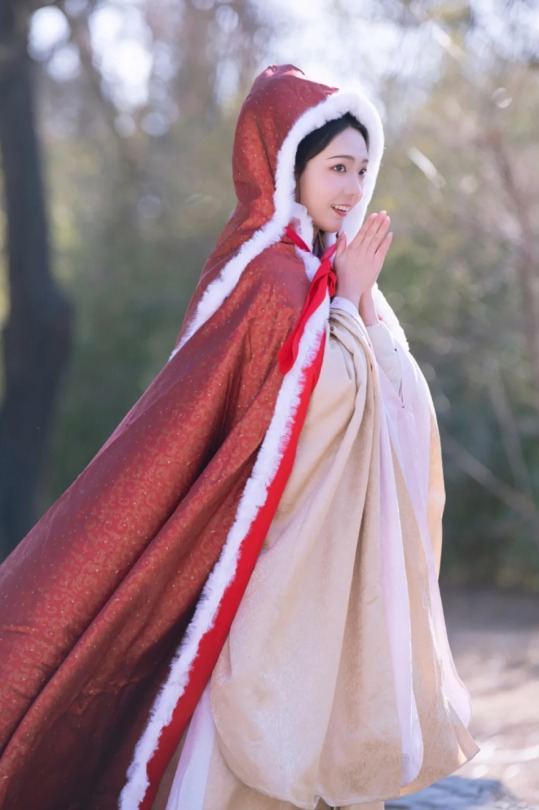
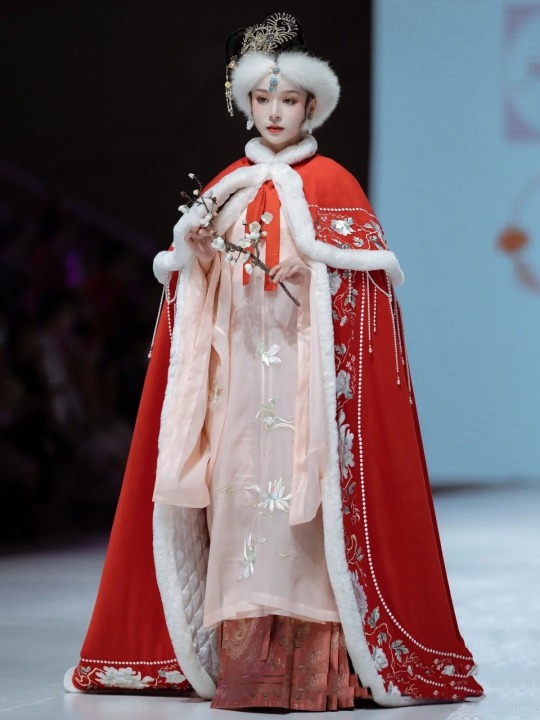
In the image on the above left, the model is wearing a separate, detached hood/hat called fengmao/风帽 (wind hat) which was historically worn to keep warm. Below - examples of fengmao (1/2):


Historically, fengmao was often worn with doupeng when travelling during cold weather (x). Below - women wearing doupeng & fengmao in historical art (top row), and Chinese opera performers wearing doupeng & fengmao as part of their costumes (bottom row) (x):
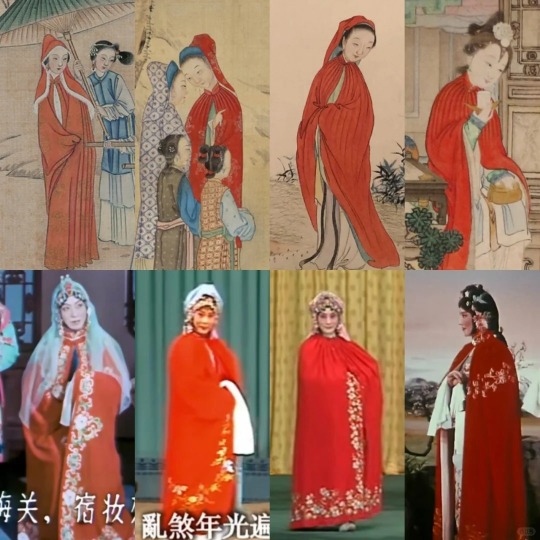
Oftentimes the doupeng & fengmao are matching, which can give the impression that they are attached - but if you look carefully, you can see that they are separate. Below - Chinese opera costume (x):
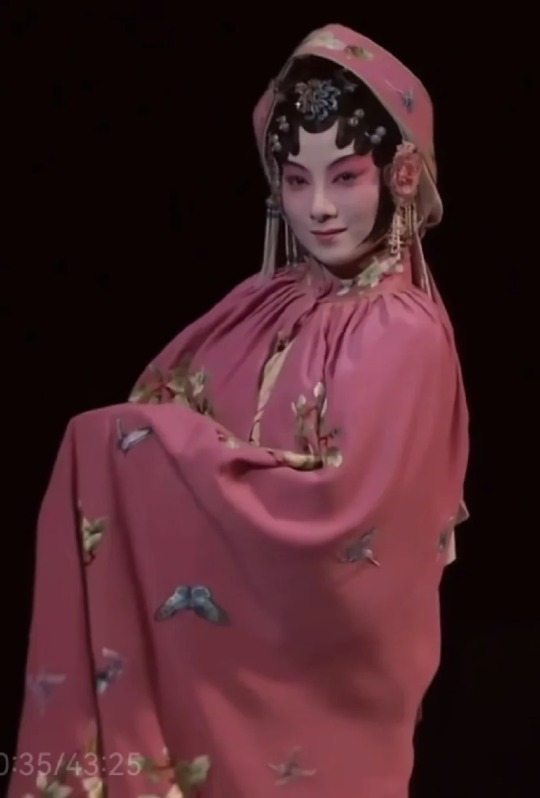
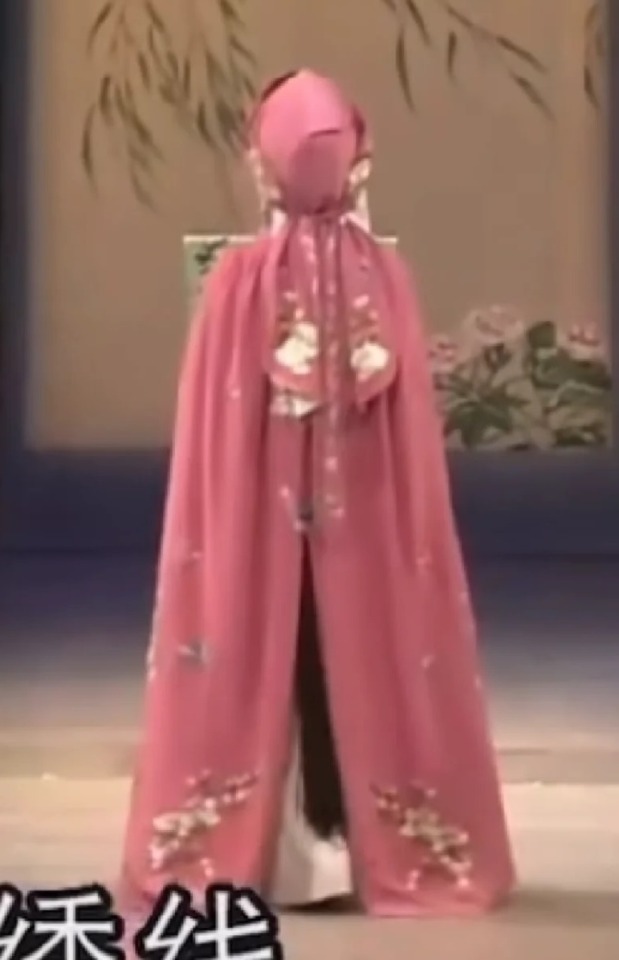
Below are historical photos of women wearing doupeng in 1920s Beijing - note how they are hoodless (1/2):
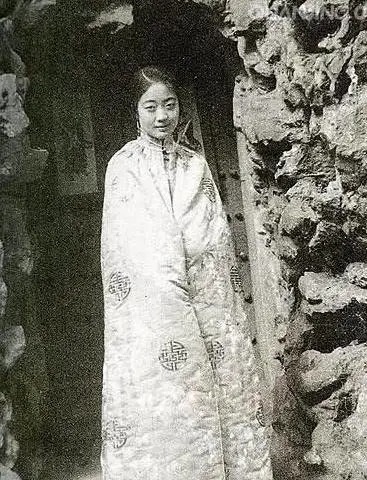
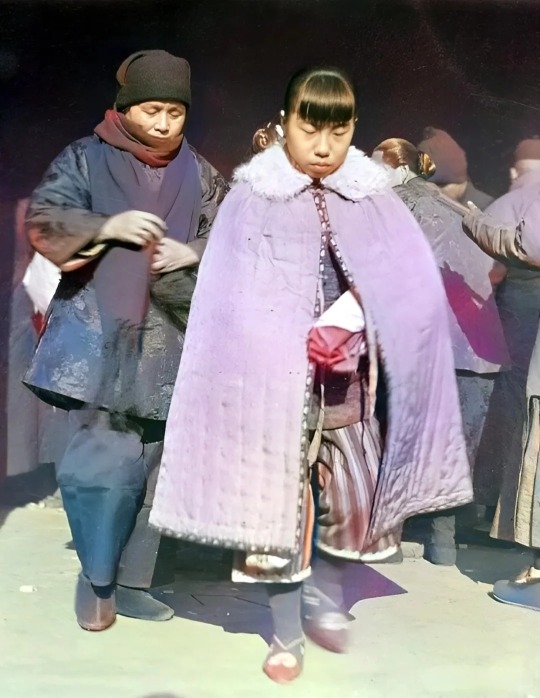
Hooded doupeng, in contrast, are more similar to historical western cloaks, such as the below American/European cloaks from the 18th century (1/2):


The hooded doupeng of modern hanfu are likely based on those seen in guzhuang dramas - another instance of drama costumes not being the most historically accurate (x):
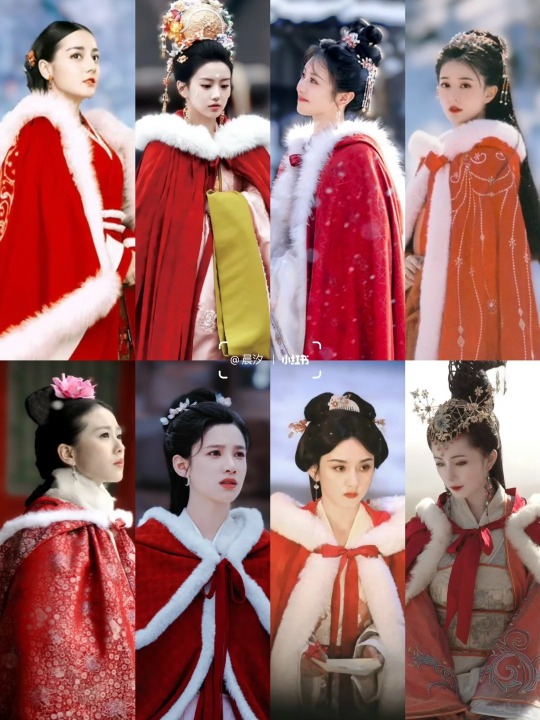
An example of a drama with a historically accurate depiction of doupeng & fengmao is the 1987 TV adaptation of Dream of the Red Chamber. As seen in the below images, the characters wear hoodless doupeng & occasionally matching fengmao as part of their winter wardrobe (1/2/3):

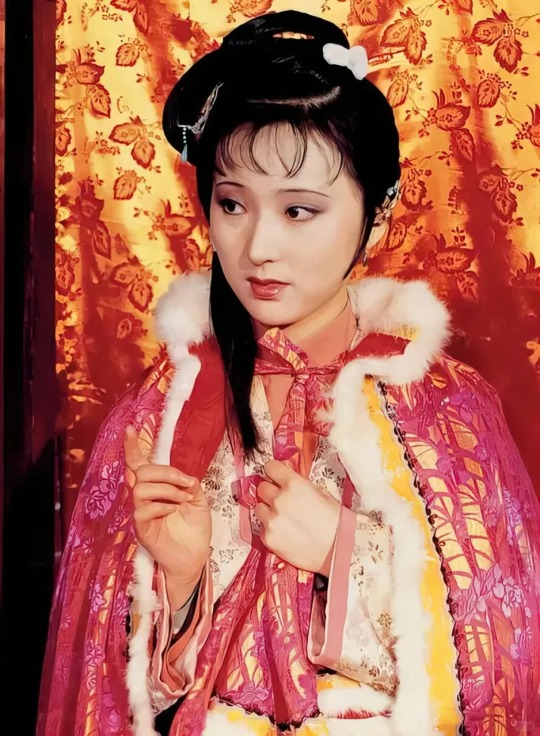

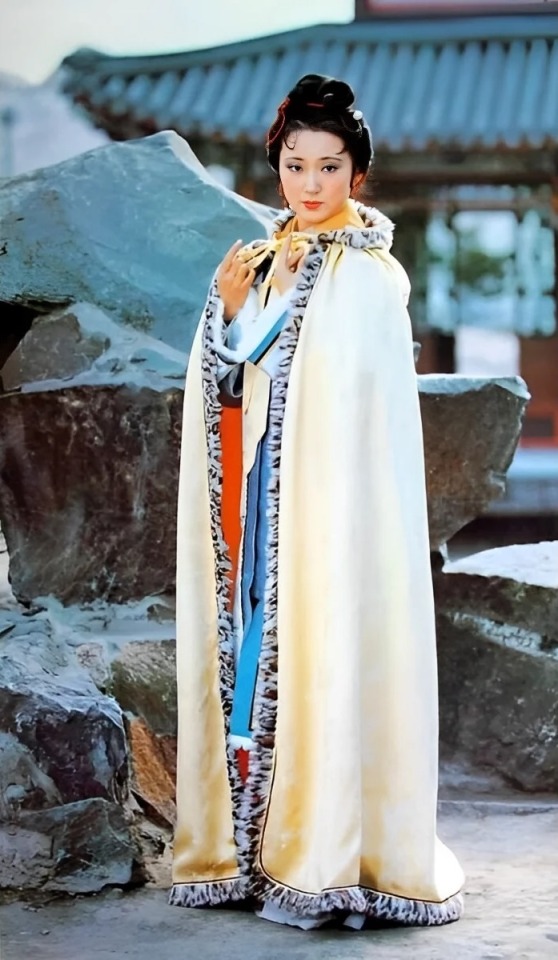
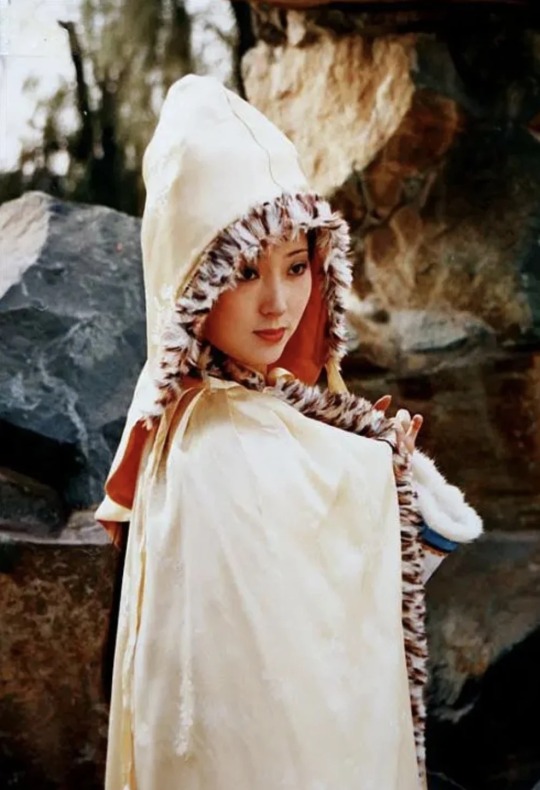
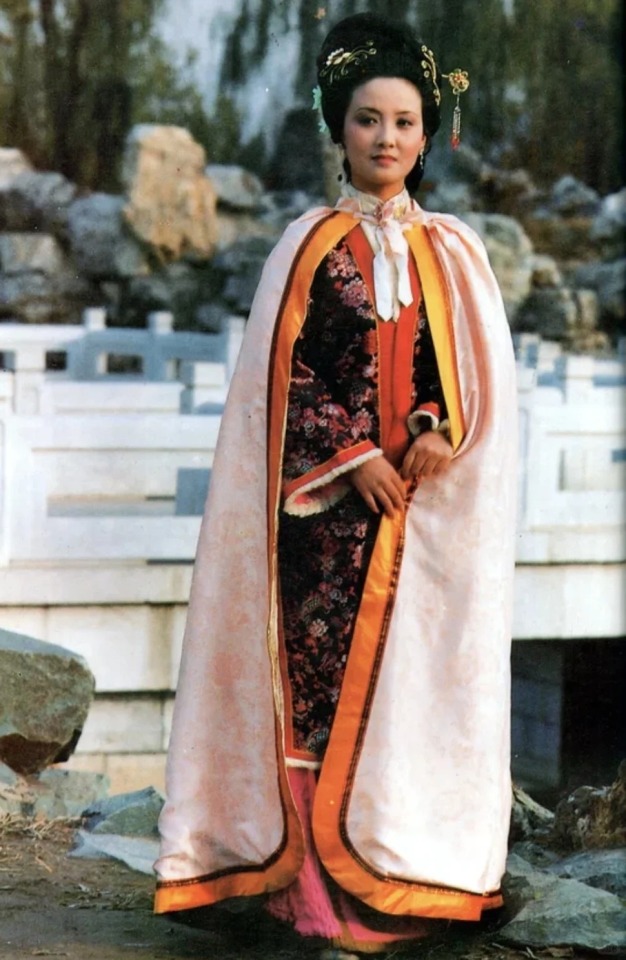

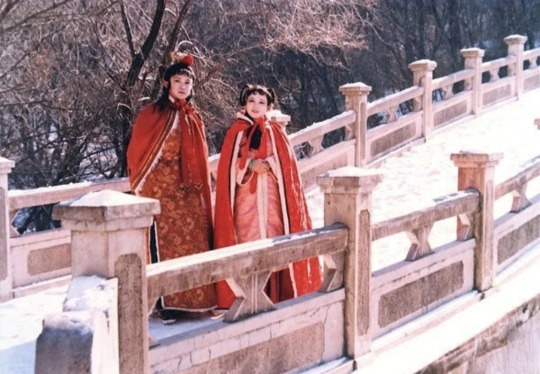
The 1994 TV adaptation of Romance of the Three Kingdoms also depicts historically accurate, hoodless doupeng & matching fengmao worn by men (x):
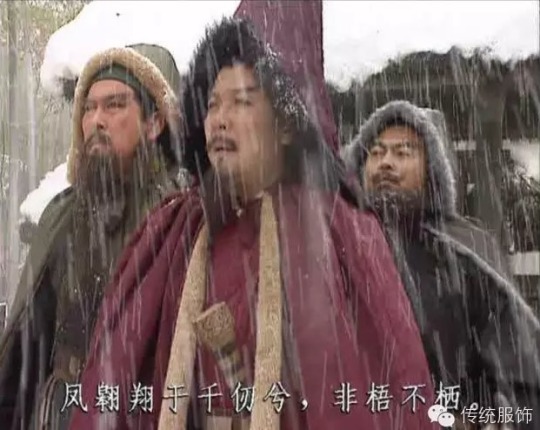
For more references, please check out my doupeng, fengmao, and winter wear tags.
Hope this helps!
#hanfu#doupeng#cloak#cape#fengmao#hats#winter wear#hanfu accessories#chinese opera#opera costume#xifu#drama costumes#dream of the red chamber#>500#china#history#reference#ask#reply#chinese clothing#chinese fashion#chinese culture
520 notes
·
View notes
Photo

Western wear for women
Style Junkiie is a platform for modern western wear for women in India. The high-fashion brand "Born in Bombay" was created by channelling the vibrant subtleties of Indian heritage into the brand's core while blending them with an international ethos.
0 notes
Text
There is a growing body of physiological, anatomical, ethnographic, and archaeological evidence to suggest that not only did women hunt in our evolutionary past, but they may well have been better suited for such an endurance-dependent activity. We are both biological anthropologists. I (co-author Cara) specialize in the physiology of humans who live in extreme conditions, using my research to reconstruct how our ancestors may have adapted to different climates. And I (co-author Sarah) study Neanderthal and early modern human health. I also excavate at their archaeological sites. It’s not uncommon for scientists like us—who attempt to include the contributions of all individuals, regardless of sex and gender, in reconstructions of our evolutionary past—to be accused of rewriting the past to fulfill a politically correct, woke agenda. The actual evidence speaks for itself, though: Gendered labor roles did not exist in the Paleolithic era, which lasted from 3.3 million years ago until 12,000 years ago. The story is written in human bodies, now and in the past.
[...]
Our Neanderthal cousins, a group of humans who lived across Western and Central Eurasia approximately 250,000 to 40,000 years ago, formed small, highly nomadic bands. Fossil evidence shows females and males experienced the same bony traumas across their bodies—a signature of a hard life hunting deer, aurochs, and woolly mammoths. Tooth wear that results from using the front teeth as a third hand, likely in tasks like tanning hides, is equally evident across females and males. This nongendered picture should not be surprising when you imagine small-group living. Everyone needs to contribute to the tasks necessary for group survival—chiefly, producing food and shelter, and raising children. Individual mothers are not solely responsible for their children; in forager communities, the whole group contributes to child care. You might imagine this unified labor strategy then changed in early modern humans, but archaeological and anatomical evidence shows it did not. Upper Paleolithic modern humans leaving Africa and entering Europe and Asia show very few sexed differences in trauma and repetitive motion wear. One difference is more evidence of “thrower’s elbow” in males than females, though some females shared these pathologies. And this was also the time when people were innovating with hunting technologies like atlatls (spear throwers), fishing hooks and nets, and bow and arrows—alleviating some of the wear and tear hunting would take on their bodies. A recent archaeological experiment found that using atlatls decreased sex differences in the speed of spears thrown by contemporary men and women. Even in death, there are no sexed differences in how Neanderthals or modern humans buried their dead or the goods affiliated with their graves. These indicators of differential gendered social status do not arrive until agriculture, with its stratified economic system and monopolizable resources. All this evidence suggests Paleolithic women and men did not occupy differing roles or social realms.
1K notes
·
View notes
Text
April 13, Xi'an, China, Shaanxi Archaeology Museum/陕西考古博物馆 (Part 4 - Sui and Tang dynasties):
This is another star of the museum, a Tang dynasty (618 - 907 AD) bronze mirror, the back of which is decorated with carved luodian/螺钿 (mother of pearl). Near the edge are various birds, while the inner ring is arranged in a "sunflower" shape. Kinda wish I can see a modern replica of this one without all these marks and discolorations from the passage of time:
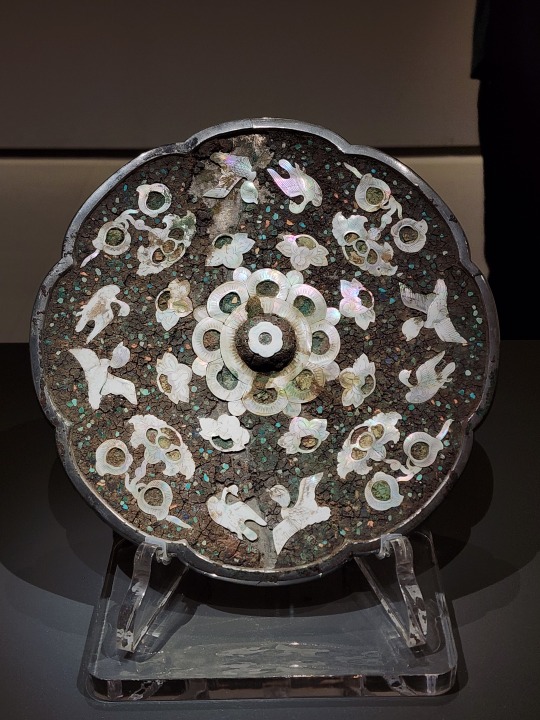
A Tang dynasty yupei/玉佩 (jade pendant). Unlike the Western Zhou dynasty yupei in part 2, this type is most definitely supposed to be hung from the waist. This one in particular was one of a set of two (both worn on waist, one on each side), and these were part of the formal wear of first to fifth rank officials during Tang dynasty:

Luo Wanshun's Epitaph/罗婉顺墓志. As mentioned in the first Beilin museum post, ancient Chinese epitaphs have a two-piece structure, consisting of a tablet and the protective covering on top. This is the protective covering on top, with the large inscription identifying this as the epitaph stone of Luo Wanshun, engraved in seal script/zhuanshu/篆书:
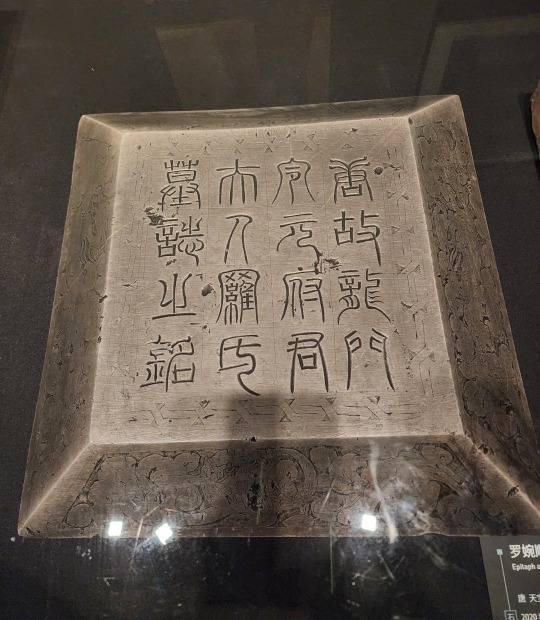
And here's the actual body of the epitaph. This particular epitaph was drafted by one of the "Eight Immortals of the Wine Cup"/饮中八仙, Li Jin/李琎 (he was also the nephew of Emperor Xuanzong of Tang/唐玄宗), and the calligraphy was provided by the famous calligrapher Yan Zhenqing/颜真卿:
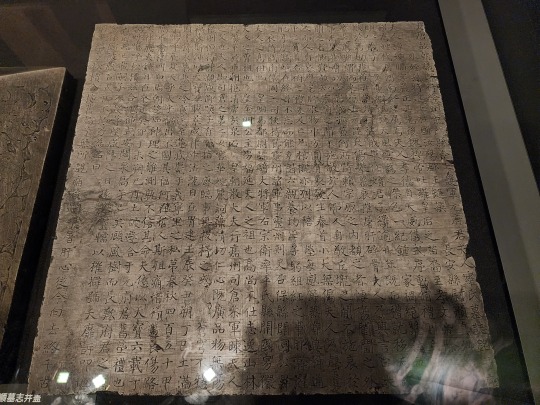
Tang-era pottery figurines of the Chinese zodiac animals. This set is sadly incomplete, but the way these zodiac animals are partially anthropomorphized is pretty interesting. From left to right, these are tiger, rabbit, dragon, snake, sheep, and dog (yep that is a dog head, apparently). Not sure why rabbit and dog figurines are missing their ears though, maybe the ears broke off and are lost?
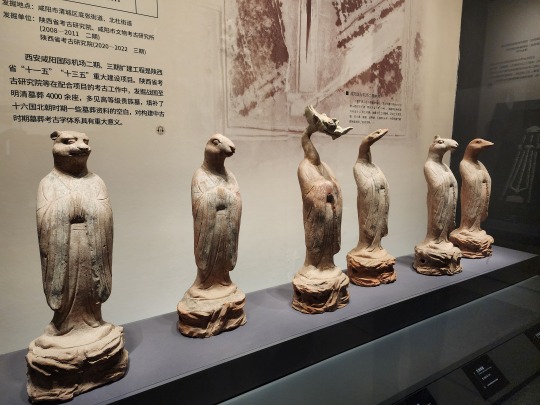
Sui dynasty (581 - 618 AD) green-glazed boshanlu/博山炉 incense burner. Note the panlong/蟠龙 dragon curled around the base:
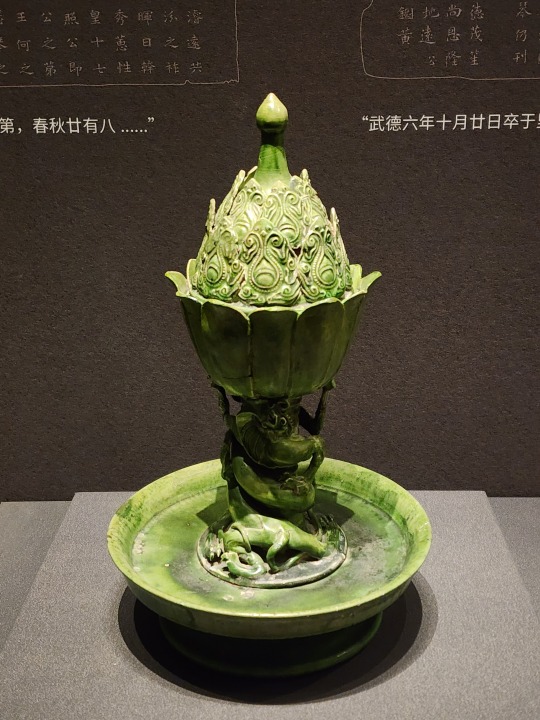
Left: Sui dynasty white-glazed ewer with a chicken head-shaped handle. Right: Sui dynasty white-glazed vase. The curves on this one is *chef kiss*
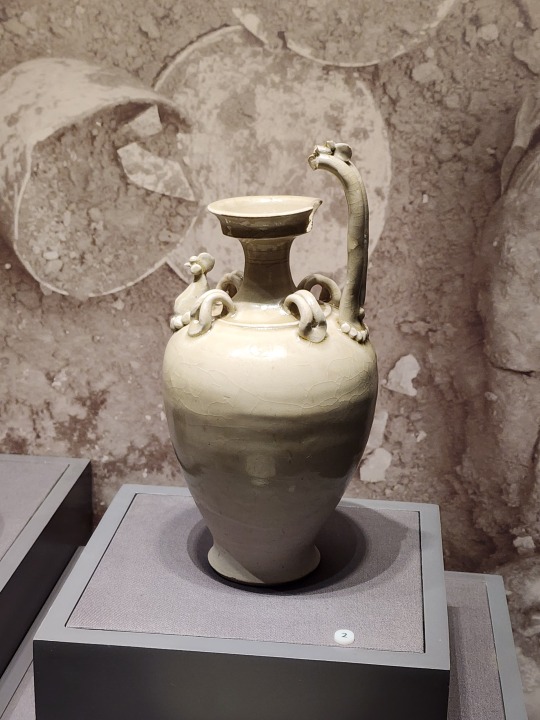
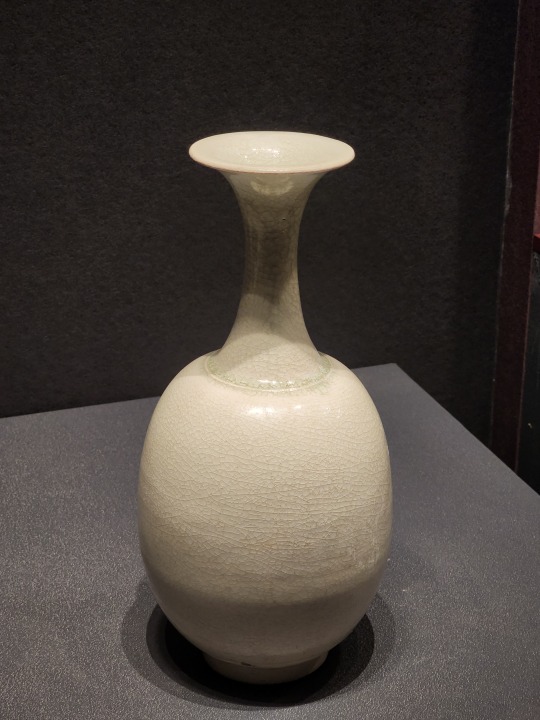
More Sui dynasty white glazed pottery, but the most incredible thing is the white porcelain cup in the middle. The lip of that cup is 1mm (~1/32 in) thick, and the sides are so thin, it's almost see through:
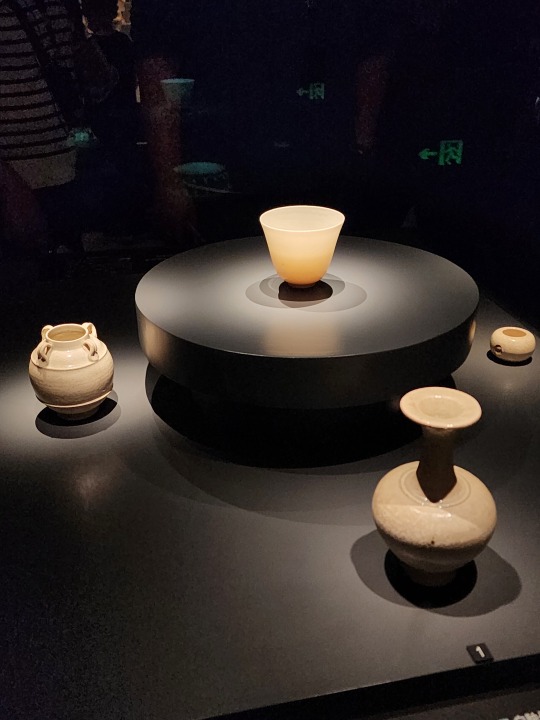
Tang-era sancai/三彩 glazed conjoined flasks that is shaped like a pair of fish. Similar twin-fish motif can be found in numerous traditional Chinese holiday decor, and symbolize auspiciousness, wealth, and surplus--especially surplus, since fish in Chinese (鱼) is pronounced yú, and "surplus" in Chinese (余) is also pronounced yú. This is why the phrase 年年有余 ("may there be a surplus every year") is often paired up with imagery of carps, children holding giant carps, or a twin-fish motif.
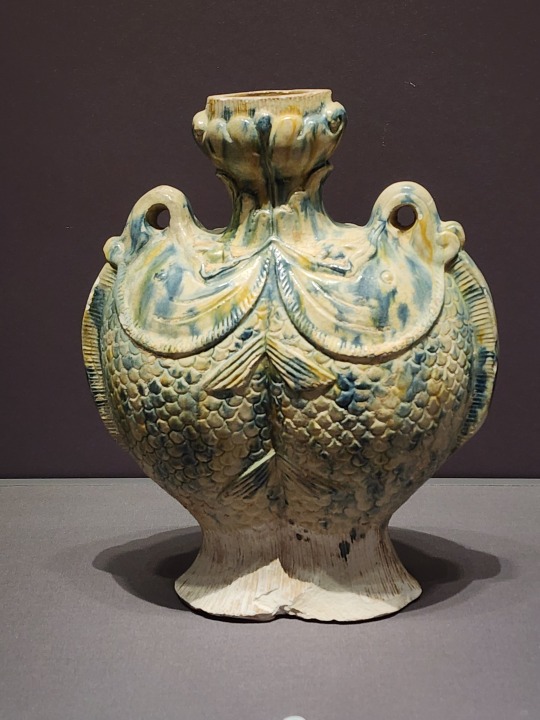
Absolutely beautiful Tang-era wall mural of a tiger, which was very sadly damaged over time. But from the pieces left, you can still appreciate the raw power of the tiger captured by these lines:
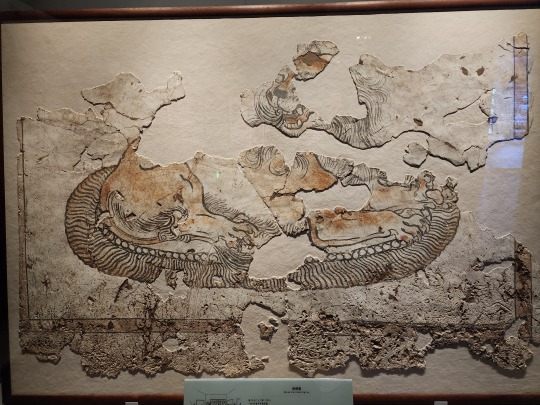
Another beautiful Tang-era wall mural depicting men on horseback playing "polo", called maqiu/马球 (lit. "horse ball") in Chinese. It's unclear whether the maqiu depicted here originated in China in late Eastern Han dynasty (25 - 220 AD) or was brought to China via the Silk Road at the beginning of Tang dynasty, but anyway this sport was very popular during Tang dynasty, and there were many female players at the time too.

The women of Tang dynasty as depicted by pottery figurines:


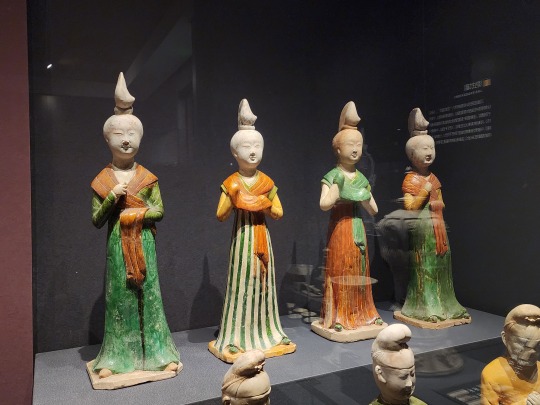
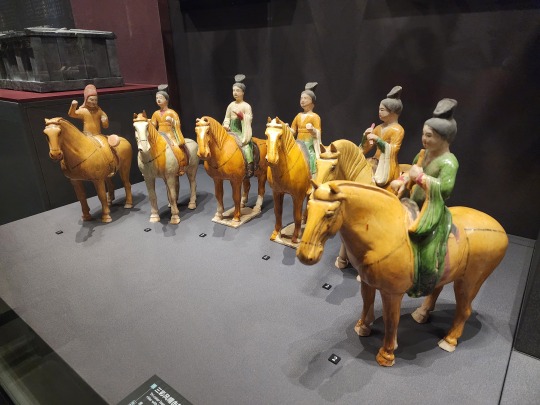
A small model of Tang-era triple que/阙 gate towers. Que gate towers first appeared in Western Zhou dynasty (1046 - 771 BC) and have been a part of Chinese architecture ever since. Que gate towers usually come in pairs, one on each side of the gate, and they were used to display status.
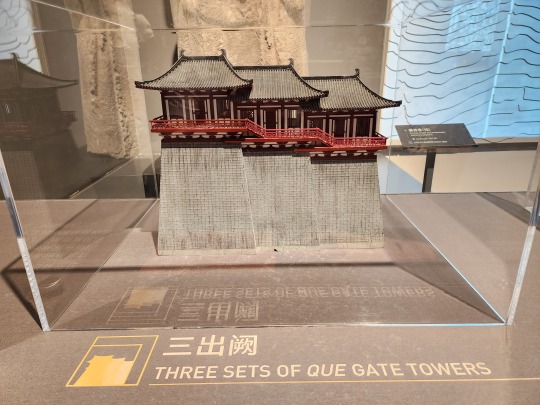
A map of Tang dynasty Chang'an city laid on top of the current map of Xi'an city, showing the imperial palace (top center), the East Market/东市 and West Market/西市, and the 108 districts (called fang/坊):
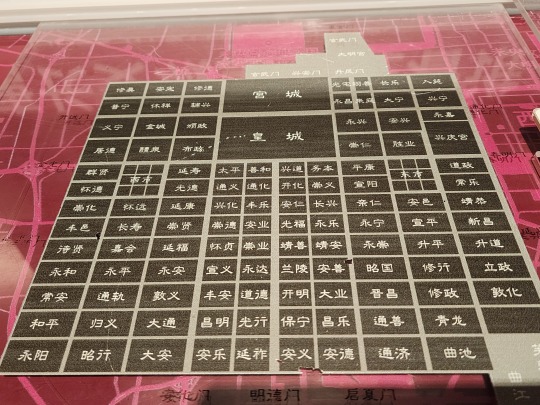
A Tang-era chiwen/鸱吻 (螭吻 is the original name, 鸱吻 is the alternative name, another alternative name is 蚩吻, but the pronunciation remains the same for all three) roof ornament. These are the pairs of horn-shaped pieces on the top of the roof of traditional Chinese architecture. These ornaments are made to represent the Ninth Son of the Dragon, called Chiwen/螭吻, which looks like a dragon-headed fish and has the power to control water, thus it's used in traditional Chinese architecture to ward off fires:
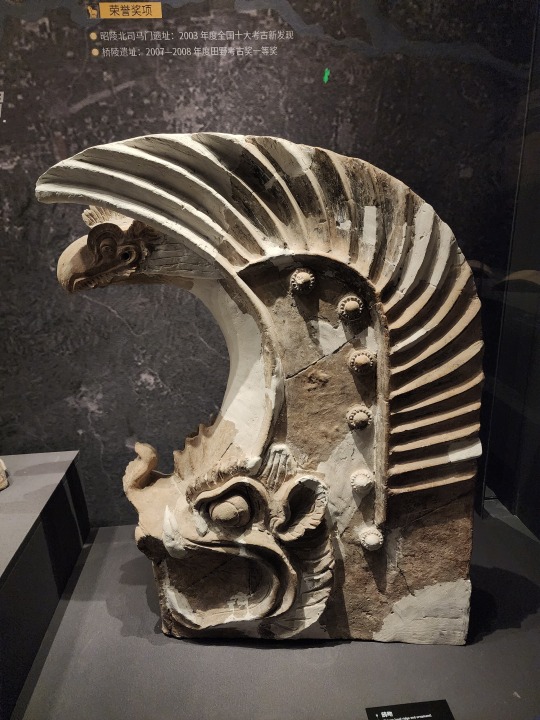
Sui-era gold gilded handle of a stone sarcophagus:
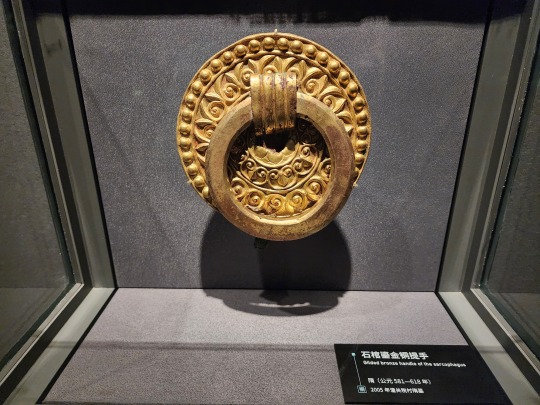
A pottery jar found buried in the tomb of Crown Prince Jiemin/节愍太子 (Li Chongjun/李重俊, son of Emperor Zhongzong of Tang/唐中宗 Li Xian/李显), partially shaped like a pagoda and decorated with various Buddhist motifs such as lotus petals and elephant heads. This is speculated to be a representation of a granary, which would hold grains for the crown prince in the afterlife:
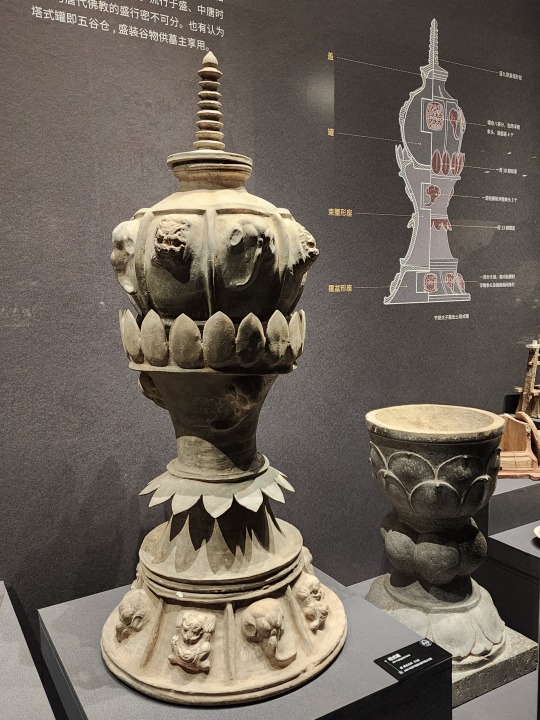
And last but not least, a Sui-era pottery camel bearing sacks that have the imagery of the Greek god of wine Dionysus upon them, which shows the great amount of cultural exchange that took place back then:
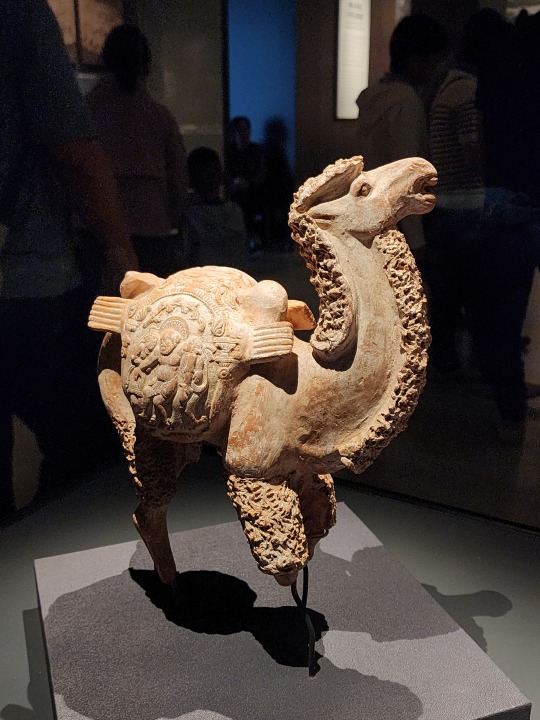
#2024 china#xi'an#china#shaanxi archaeology museum#chinese history#chinese culture#sui dynasty#tang dynasty#chinese calligraphy#calligraphy#archaeology#history#culture
235 notes
·
View notes
Text
Female Sexual Freedom = More Sexless Men?
By all metrics, female sexual freedom is at an all-time high in Western society. In this discussion, female sexual freedom / liberation / empowerment is a general term used to describe women’s
-openness to casual sex,
-average number of sexual partners, and
-ability to be sexually promiscuous without social repercussions.
We see today’s women, in large numbers, going out in revealing outfits that draw attention to their sexual features. We know that the typical modern woman does not have the same hesitation toward casual sex that women had 30 years ago. Rather than hide her sexuality and treat it as sacred, she wears it like a crown, unapologetically. She flaunts it on social media.

This is just one effect of a broad scale cultural change in the developed world. As we become more scientifically and technologically savvy, there is a large movement to depart from the ancient wisdom encoded in religious principles, and instead, to derive our values from rationality.
And this is the result. A population of free, empowered women who live with a focus on fun and pleasure. They reject religious dogma (it’s just a bunch of arbitrary rules!). Since there aren’t any objective values and everyone can pick their own, this leads to the feminine tendency to be inclusive and tolerant of everyone (except when it comes to sexual selection, of course. There’s no inclusivity there, but it’s just biology so you should respect women’s decisions).

Now here is the paradox. Sexuality has become a lot more public. Women are much more open to engaging in casual sex. Hookup culture is widespread. We’ve never lived in a more sexual society. So it should follow that your everyday, average Joe is getting a lot more sex, because the barrier to sex is so low, right?
Actually, the opposite is true. The average guy experiences a barrier to sex that has never been higher. It is fair to say the average man today is invisible to women. Check out the standards females set for men today. Check out the statistics on male sexlessness. The number of sexless men has been rapidly increasing every year in this digital age.
The culture is becoming extremely sexual, but here’s the catch: the only men who get to participate are those in the top tier (the men who women actually want to have sex with).

Therefore, instead of saying we live in a hypersexual society, it’s more accurate to say that women are no longer beholden to traditional values, so they can freely express their deepest desires, and instead of getting shamed, they are accepted. We are letting their true colors shine through!
And what did those true colors turn out to be?
Women love sex! But not with an average guy.
In plain, honest terms, what women want is to chase the man with value. The man who could get any girl. She wants to seduce him. Make him fall in love with her. That’s the female sexual fantasy that we’re watching play out. It has nothing to do with giving out sex to an average guy.

This paradox is an example of the tug-of-war between freedom and equity.
Society has removed much of the stigma on sexual promiscuity, substantially increasing our ability to freely make sexual decisions without getting judged. We’re taking down the barriers on sex and sexual behavior, so it’ll be more accessible to everyone!
But the effect is the complete opposite of “more sex for everyone.” Women’s freedom to act out their deepest desires without apology has resulted in the strongest social caste system of men, because those deep desires only pertain to alphas. Some men fuck hundreds of girls. For other men, the only way to have sex is to pay for it.

The same consideration applies to every item of public policy. The laissez faire capitalist system is attractive because everyone is free to make their own decisions. But since consumers are naturally going to select the best products available, the system is prone to monopolistic takeover. The result is that everyone buys from the same few companies, and your average Joe cannot enter the playing field because he has no ability to compete.
We know one thing for certain. Freedom is key! We should all be free to pursue our highest potential. That’s equality of opportunity. You can’t control the outcome without infringing freedom. Some of us will achieve at a high level and reap all the rewards, but most of us will never come close no matter how hard we try. At the end of the day, we accept the rewards if we’ve won, and if not, we don’t complain when we see the spoils awarded to others.
#beta boi#beta virgin#beta bitch#beta captions#virgin humiliation#pathetic loser#loser humiliation#virgin loser
228 notes
·
View notes
Note
Hello, I have a weird question but maybe you can answer it. When I was a teenager I was gifted a yukata and taught to tie the obi to make it look like a bow. That was cute then, but now that I'm in my mid 30s I wonder if this is still appropriate. Are there other ways to tie the obi of a yukata that are maybe a bit more mature ? I love wearing my yukata, but I'm starting to get self-conscious about maybe being too old for that… (I only wear it for matsuri in Japan so it's not like it's often, but it makes me even more self-conscious because I am very clearly not Japanese so I don't want to look ridiculous.) Thank you !
Hi fellow mid-30's kimono wearer :D It's true some styles can feel a bit weird depending on ages.
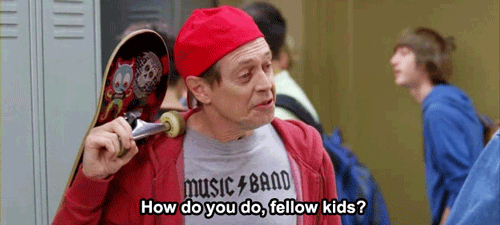
Though nothing truly forbids you to keep wearing bunko musubi, if you don't feel confortable with a bow knot or its variations (for ex. this one or this one?), don't despair! there are many (like MANY) other knots which would work with your age and "status" :D
If you wish for something classical, I'd recommend:
Kai no kuchi musubi (clam mouth knot) - a super all purpose knot, worn by women and men alike. It's been around for ages and never went out of style!
Ronin musubi (ronin knot) or katabasami - unisex knots that have been around for a long time too, pretty sturdy and chic.
Karuta musubi (card knot) - easy to tie and quite flat so perfect if you have to ride a car/train or sit on Western chairs.
Taiko musubi (drum knot) or tsunodashi musubi (also called Ginza musubi) - you can fake those ones (usually tied with wider obi) with a hanhaba obi, see examples here and here.
More on the novelty side :
Kamifusen musubi (paper balloon knot) - a more whimsical knot but could still work depending on your style. It asks for preparation but it's very cute :)
Neko mimi musubi (cat ears knot) - there are many variations, with or without hanhaba obi - look at this one for ex
Not-tied obi, a super modern way of wearing obi. Ayaaya has a lot a those, check for example this one and look at her socials for more (especially "frilly" variations)
Any variations of what I call the "waterfall" musubi, where obi ends are elegantly arranged thanks to elastique belts. It's super fashionable atm, see it shown step by step on Billy Matsunaga's channel.
To go further, searching for "hanhaba obi musubi" will gives you a lot of other ideas ;)
Hope it helps, and that you'll have a lot of fun at matsuri!
#ask#hanhaba obi#obi musubi#obi#obi knot#musubi#yukata#kai no kuchi#ronin musubi#katabasami#Karuta musubi#Taiko musubi#tsunodashi musubi#Kamifusen#Neko mimi#modern kimono#step by step#tutorial#how to#kitsuke#着物#帯
187 notes
·
View notes
Text




Ross Lynch Imagine - Cowboy Aesthetic
It's no secret that Ross has an affinity for the cowboy aesthetic only rivaled by your affinity for him. No one really knows why he likes it so much, but after a while as his partner, you've ventured a few guesses.
It could be his tendency toward rugged masculinity. Sure, Ross was comfortable enough in his manhood to wear anything and be confident just as any modern man should. That said, his usual wardrobe choices and fashion inspirations all suggested a calloused-hand, deep voiced, tough as nails form of masculinity he seeked to embody, (even if Ross's personal brand of masculinity rang much less restrictive and more accepting.) Few groups of men in American history lived by this masculine ideal more than cowboys, or at least the ones in old westerns.
If not that, you could see it being a parallel between the handling skills of Ross and the average cowboy. Obviously, Ross wasn't taming and riding horses place to place, but he had an understanding of the utter enigma of what goes on under the hood of a car that few could match. Not to mention his skill with taming and subduing modern-day beasts, AKA drunk grown men in the club and freaky grown women at his shows.
Most people probably chalked his cowboyish-ness up to those to factors, but you've got a bit more insight into why he might like the aesthetic so much. That being his love for tying things up with rope- well, people more like. You couldn't count how many times Ross has tied you down to something during sex, let alone how many times he's asked to. He was scary good with rope, too, to the point that just about any other man with his tying skills would set off your serial killer alarm bells. The only reason you weren't threatened by Ross was his respect for when you wouldn't agree to it, as well as his general trustworthiness as a man.
Again, it was really impossible to know without asking, but these three reasons (and a hidden horse-sized fourth,) always made the most sense to you. Of course, the reason didn't really matter to you so long as you could make use of the maxim "Save a horse- ride a cowboy."
A Little More Ross...
#i bet he's good with a whip too but thats neither here nor there#ross lynch#ross lynch imagine#ross lynch x reader#sexy#male celebs#smut#imagine#lynchs-finch
72 notes
·
View notes
Note
What do you think about the new styles of garments?
For those who don't know, the changes being referred to are a sleeveless option, and options that are meant to be worn underneath of skirts and dresses.


I have a few thoughts.
First, this is a good reminder that changes have happened in the past, and changes will happen in the future. Often we think the way things are is how they've always been and will always be.
Second, I think these changes are likely a result of women speaking up. The existing garments often didn't fit with modern fashions, plus they often caused irritation and infections. I've been hearing women speak up about this for years and finally they were heard. It's a reminder that speaking up is often the catalyst for change.
Third, many of the meanings people ascribe to the things at church is wrong. All those lessons were wrong that the garments define what is "modest" clothing. Think of all those parents who made a big deal that their little girls not wear the sundress that was a gift from grandma. I can think of youth dances where a visitor was pulled aside and given a wrap or a vest or shawl to cover their shoulders. There's been so much judgement and policing of what people wear (especially of what females wear) and turns out much of it is misguided.
Fourth, there have been surveys which show younger members often wear the garments intermittently, perhaps only when they go to church or to the temple. The LDS church has gone through several cycles of temple recommend interviews including a statement about wearing the garments night and day. Perhaps these changes are an attempt to make the garment easier to incorporate into daily wearing. Although, I wonder if the message people will take is that they were correct and it's okay to modify and personalize when and where and how to wear garments.
Fifth, these new styles will first become available in the Philippines and Africa where climates are warm and humid. I live in Florida and wearing garments here can be uncomfortable. When I attended school in Idaho and Utah, wearing garments was much more comfortable. I think this is yet one more way the church is acknowledging the membership who live outside the Mormon corridor of the western United States. I can't help but think these new styles will soon be the dominant option that people choose as they're a bit less restrictive and offer more flexibility in how you present yourself to the world.
Fifth, despite the variety of fabric options and now having sleeveless options, wearing temple garments can be a bit of a sacrifice. Perhaps one day we can apply the symbols onto the inside our own clothes and not have to deal with the limited selections of the garments. I read an idea that perhaps it would be more meaningful if we painted the garment symbols on our bodies each day, like a bindi. They may be onto something.
47 notes
·
View notes
Text
The goddesses of ancient Greece also displayed the characteristics of flesh and blood menstruants: Medusa, her hair writhing with vaginal snakes, had an ability that was also imputed to menstruants in some cultures: she turned living things to stone with her gaze. She is the menstruant naked, out of control, without protective cosmetikos. Gaia, the earth, was a chasm guarded by a great python. Long-tressed Demeter was also the earth, and her daughter Kore, or Persephone, the maiden, was portrayed holding the menstrual pomegranate. Kore disappeared and her mother went to look for her—a common menarchal drama for some peoples. Hera was "the bride," dressed austerely in long gowns. Hecate was the dark moon, portrayed as an old woman. At Sumer, alabaster statues of the large-eyed moon goddess Ningal were dressed, fed, and washed; even the urbane goddess Inanna was portrayed in one statuette holding a scratching stick, adorned with the cosmetikos of a temple courtesan.
Frequently ancient figurines portray two women together, sometimes melded like Siamese twins, side by side. Often these "dolls" wear skirts, eye and lip makeup, and hoop earrings. Frequently they are stained red. Similar dolls are still made for girls to play with in North Africa, India, and parts of the Middle East. Some of the modern dolls are of a man and woman side by side. My guess is that the paired icons were originally two sisters, representing synchronous flow. The dolls, I was told vehemently by the import shop clerk, have nothing to do with lesbianism, and I'm certain that in any current patriarchal religious system, that is true. But in more female-centered older societies, the Andean, for example, and in many parts of Western society, homosexual relations have a rightful, appropriate, and even sacred place. It thus seems significant that in the south of India, among goddess-worshiping Tamils of the Untouchable caste, a name for lesbian lover is "sister-sister."
Many goddess mythologies feature two creation sisters. Pele, the Hawaiian volcanic fire goddess who creates the earth's surface, has a sister who is "Sea Mist." Among the Pueblos, sister goddesses Naotsete and Uretsete create objects under a blanket they hold between them. Sometimes one sister dwells in the world below, "in the shade," the place of the dark moon, while the other rules above, as with Egyptian Isis and her underworld sister Nepthys. The oldest known menstrual narrative of the meetings of two such sisters is the Sumerian poem, "The Descent of Inanna to the Underworld," whose metaformic meanings I will decipher later. A Caribbean proverb summarizes an ancient attitude of female "flow": "When a woman loves another woman, it is the blood of the Mother speaking."
-Judy Grahn, Blood, Bread, and Roses: How Menstruation Created the World
36 notes
·
View notes
Text
From a thing to wear to an icon of culture 👘

There is this hidden detail in Muzan that when I noticed I could not help but smile. Remember how he said that the thing he hated the most was change? Well coming from someone that had to live in 5 different eras is kinda funny, and it's even funny when you realize that he ended up adopting the Western fashion pretty fast. But that's the twist, if you look at Muzan's vest you come to realize that it's the exact same pattern as the kimono he used to wear. The best part? That was a thing that actually happened in history.
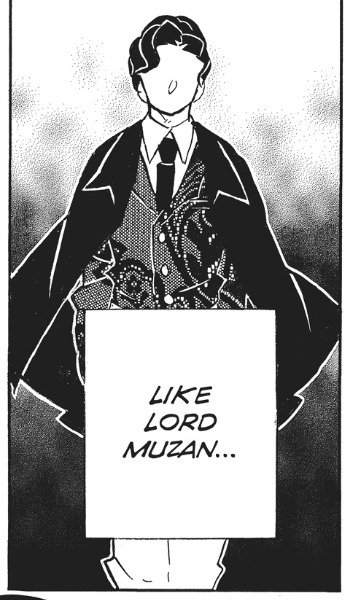
Wanting or not, the clothing that the people used to wear represents the history they lived through. "To look seriously at art objects of the everyday, such as clothes - their discourse and practices, their meaning-bearing forms and their codes of internal and external interpretations - in an essential, and often neglected, component of any study of modern aesthetics." - Slade, 2009 Yofuku [Western Clothing] is a type of clothing that is now common all over Japan, but during a lot of time, it was a type of clothes that only selected few grew up with. The 1st contacts with these types of clothing [even if extremely different from what we now call western clothing] was in the 16th century when the Portuguese arrived in Tanegashima. With them came not only different shapes but also different fabrics. But the “true” introduction to western fashion would only happen with Commodore Matthew Perry, catharsis to the Meiji restoration, where Emperor Meiji would start to dress in a typical western military outfit, and soon after the empress would start to aper in the typical victorian dresses. In the Edo period clothing visually distinguished the social classes. "Certain articles of clothing visibly differentiated people of diverse social classes, and simultaneously distinguished an individual within a specific group. The materials, motifs and construction of military campaign coats, for example, marked their wearers as men belonging to the military class." - Milhaupt, 2014; Samurai ranked on the top, followed by farmers, artisans, and merchants on the bottom. What happen was that most of the times the samurai where poor while the merchants lived in economic success. But samurai had the privilege of using certain types of fabrics and patters, even tho most of the times they could not afford them, and so, the merchants would start to adapt the fabrics and patters they were allowed to were and would end up becoming the patrons of arts and fashion. The trends of fashion would later be documented in ukiyo-e, and not only in the work of art sense, but also in pattern books were people could browse the prevailing styles. After the 1st contacts with the westerners, what would start to happen is that slowly but surely the Japanese would start to integrate the western ways of dressing into their lives. The Japanese started to introduce some of its elements with the kimono, shoes, hats, gloves, glasses, umbrellas, etc. Then in the 19th century a full change would happen starting from the man in the highest classes to the man in the lowest classes. The emperor decided to cut his topknot in 1872 and started to dress in western clothing in official appearances, also changing some of the more cultural habits like eating meat and more wester kind of meals. In the official portraits he appears adorned with a French-style military uniform with ornaments in gold and ostrich feathers. Before this, the emperor was never a public figure, so when pictures of the Meiji Emperor became available, and he started to appear more publicly the nation would have their eyes on him and start to imitate him. Women would, for the longest time still dress in the now classic kimono, that would develop as a symbol of the old and traditional Japan. The idea of the western clothing being associated with a modernized Japan and the Kimono [that literally means “thing to wear”] to a traditional country came from the fact that the emperor would choose to wear western clothes in more formal, international events, and for religious national events would choose the traditional Japanese court dress. The western clothes will end up being a symbol of the modernization of Japan, and the Meiji government would use it as yet another tool of national control. For all the Japanese born after 1945 the western clothes became the norm. Most families would end up transforming their kimonos into western clothing pieces, and the patterns sold for kimonos would double for kimonos and western clothing.

But it is funny to notice how despite it all Muzan is the one being presented in western clothing and Ubuyashiki is the one in traditional clothes, always being the contradiction of the other, but also it can also be interpretated as the Ubuyashibi family being "trapped" in the past since in hundred years the corps never killed an upper moon, the history never changed. And Muzan in his ever-changing cycle of his life, in the changing of eras and changing of personas he decided to reuse the only thing he could: his clothes. And just like him, they would adapt through the times.

MILHAUPT, Terry Satsuki. 2014 - Kimono: A Modern History. London: Reaktion Books [Ebook]; SLADE, Toby. 2009 - Japanese Fashion: A cultural History. Oxford, Berg. [Ebook];
#demon slayer#history#demon slayer from history to fantasy#demonslayerfromhistorytofantasy#history research#japanese history#demon slayer history#kimetsu no yaiba#research#demon slayer muzan#muzan kibutsuji#ubuyashiki#kimono
230 notes
·
View notes
Text
Ziseviolet’s 2023 Tumblr Top 10
1. 2,297 notes - Jan 1 2023
Q: Can you explain the difference between hanfu and huafu?

2. 1,208 notes - Jun 26 2023
Q: How did Han women manage their menstrual cycle historically?

3. 1,104 notes - Nov 21 2023
“Chinese style meets the Matrix”-esque looks.

4. 454 notes - Aug 21 2023
Q: The intricate "eye patches" seemingly made from gold or metal that cover only one eye - do they have a name or is it something made up?

5. 278 notes - Feb 15 2023
Paintings of couples in Chinese hanfu.
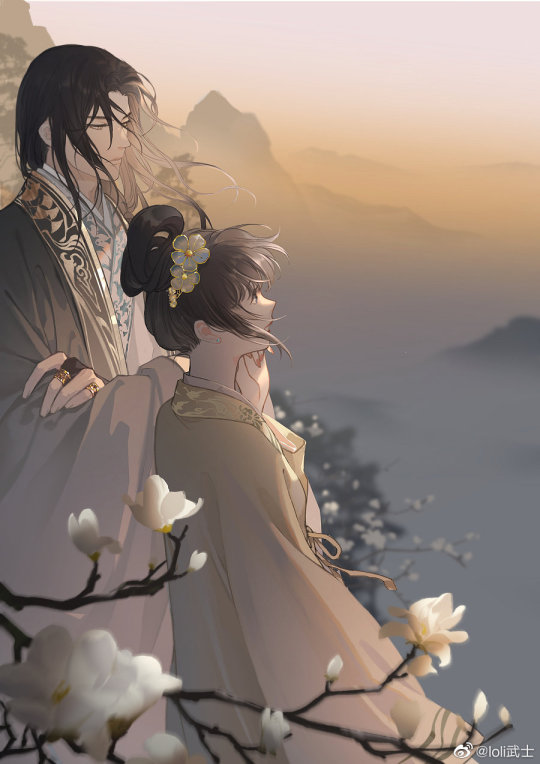
6. 266 notes - Feb 19 2023
Q: How to distinguish fake/knockoff clothes sold online, so we can buy hanfu from official brands and support the designers.

7. 162 notes - Oct 23 2023
Qipao/cheongsam Taobao shop recs.
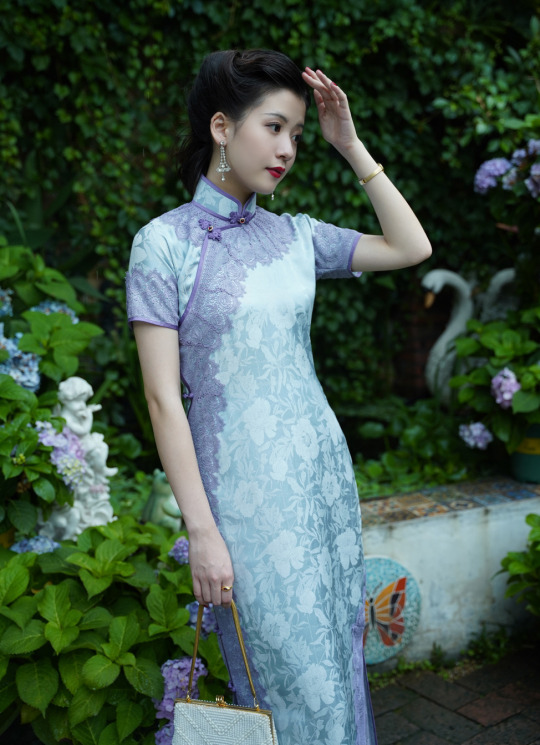
8. 145 notes - Feb 27 2023
Vent.
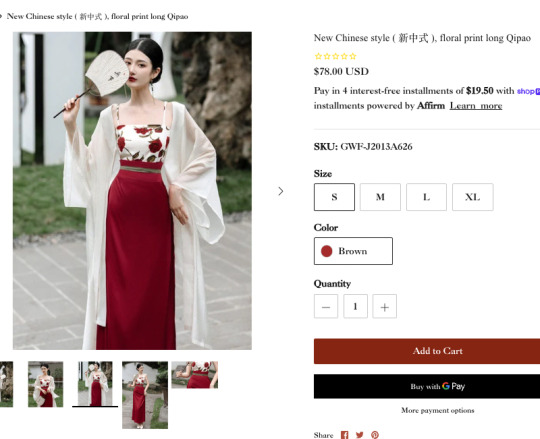
9. 141 notes - Mar 13 2023
Q: It’s better to change "modernized hanfu" into "hanfu theme modern dresses" because most of those are Western dresses with Chinese elements.

10. 136 notes - May 30 2023
Q: What type of clothes did Chinese maids wear? Did they wear ruqun styles and wear their hair in two buns?

See previous years here.
Created by TumblrTop10
95 notes
·
View notes
Text
A Young Person's Introduction to Early 20th-Century Western Fashion
am i hip with the kids yet
General information Dotschkal, Janna. "1920's." FOUND. October 21, 2016. English Heritage. "Fashion Through History: Episode 3 – 1930s." YouTube. April 16, 2023. Rudolph, Nicole. "The History of Standardized Sizes in Womens Fashion and Why They FAILED." YouTube. May 16, 2021. Vintagebursche. "100 Years of Classic Menswear - and what we can learn from each decade." YouTube. February 29, 2020. Zebrowska, Karolina. "1920s Fashion Is Not What You Think It Is." YouTube. May 20, 2018.
Accessories Cox, Abby. "Flappers, Y2K, & Capitalism are Why Women "Don't" Have Pockets." YouTube. January 12, 2023. Cox, Abby. "The Disappointing Truth On Why We Don't Wear Hats Anymore..." YouTube. December 18, 2022. Rudolph, Nicole. "The History of the Iconic Cloche Hat: Making 1920s Fashion." YouTube. September 18, 2022. Rudolph, Nicole. "When Hats were Illegal: Sewing a Goth Edwardian Hat." YouTube. February 21, 2021. Sheehan, Sarah. "Neo-Egyptomania." PatternVault. December 31, 2022. Zebrowska, Karolina. "Why Did We Stop Wearing Hats?" YouTube. April 28, 2020.
Cosmetics Banner, Bernadette. "Making and Testing a Victorian Skincare Routine." YouTube. April 8, 2023. English Heritage. "1930s Makeup Tutorial | History Inspired | Feat. Amber Butchart and Rebecca Butterworth." YouTube. December 18, 2018. Holland, Evangeline. "On How to Be Lovely." Edwardian Promenade. April 15, 2010. Rudolph, Nicole. "The Controversial History of Color Season Analysis." YouTube. November 4, 2023.
Fabrics Rudolph, Nicole. "The History of Elastic." YouTube. July 4, 2021. Rudolph, Nicole. "Wearing Overalls to Boycott Fashion Greedflation? Weird History of 1920." YouTube. March 16, 2024.
Gowns and formal wear Banner, Bernadette. "I Redesigned Mary Poppins' Jolly Holiday Dress Based on REAL Edwardian Lingerie Gowns." YouTube. February 20, 2021. Banner, Bernadette. "I Remade Mary Poppins’ Dress to be Actually Edwardian." YouTube. July 9, 2022. Cox, Abby. "Alexander McQueen & the Patriarchy Problem in Modern Fashion." YouTube. October 20, 2023. Cox, Abby. "What Makes a Gown Haute Couture (like House of Worth) in Victorian and Edwardian Eras?" YouTube. September 19, 2021. Lady Rebecca Fashions. "An Edwardian Woman's Fashion Evolution." YouTube. June 4, 2022. Oakes, Leimomi. "Terminology: what is a lingerie dress or lingerie frock? (and blouse, and skirt)." The Dreamstress. July 21, 2018. Rudolph, Nicole. "Stop Idolizing Coco Chanel: a shocking history of theft." YouTube. January 13, 2024. Rudolph, Nicole. "The Truth about the Fringed Flapper: Making 1920s Evening Dresses." YouTube. November 6, 2022. Vintagebursche. "1920s Theme Party - How to dress." YouTube. December 9, 2023. Zebrowska, Karolina. "1920s Fashion Encyclopedia, Pt 1: Daywear." YouTube. November 27, 2019.
Hair care and styling Banner, Bernadette. "I Tried Following a Real Edwardian Hair Care Routine." YouTube. May 12, 2020. Lady Rebecca Fashions. "Getting Dressed in the Edwardian Era / Gibson Girl Hairstyle Tutorial." YouTube. June 12, 2020. Lady Rebecca Fashions. "Titanic-era Hair Tutorial // Getting Dressed in the 1910's." YouTube.September 4, 2020. SnappyDragon. "Historical hair myths debunked : How often should you wash your hair—daily shampoo or no shampoo?" YouTube. August 12, 2022. Zebrowska, Karolina. "Weird Edwardian Beauty Tips." YouTube. February 11, 2017.
Laundry and starching Banner, Bernadette. "Ok but how did the Edwardians WASH these dresses?" YouTube. August 3, 2022.
Outerwear Cox, Abby. "Athleisure: Destroying Fashion & the Environment." YouTube. January 18, 2024. Rudolph, Nicole. "150 years of Masc Women causing a Moral Panic." YouTube. June 17, 2023. Rudolph, Nicole. "The History of Jeans, T-shirts, and Hoodies: Time Travel 101." YouTube. March 20, 2022. Zebrowska, Karolina. "SPRING/SUMMER FASHION TRENDS REVIEW but it's 1936 (ft. original fabric samples!)." YouTube. April 22, 2022.
Shoes Rudolph, Nicole. "I Made Witchy Edwardian Shoes by Hand!" YouTube. March 14, 2021. Rudolph, Nicole. "Making 100 year old Comfy Slippers: Free Pattern!" YouTube. December 30, 2023. Rudolph, Nicole. "The Myth of Tiny Feet "Back Then"." YouTube. September 26, 2021. Rudolph, Nicole. "The True History of Stiletto Heels : the battle between Ferragamo and Dior." YouTube. August 26, 2023. Zebrowska, Karolina. "Why Is No One Talking About 1930s Shoes?" YouTube. September 15, 2020.
Undergarments Banner, Bernadette. "1903 Patented Bustle Pad Reconstruction." YouTube. June 8, 2019. Banner, Bernadette. "Achieving That Classic Edwardian Shape: Reconstructing a 1902 Bust Bodice." YouTube. April 16, 2020. Lady Rebecca Fashions. "So What are Guimpes Anyway? // Examining Antique Edwardian Guimpes." YouTube. August 21, 2020. Lady Rebecca Fashions. "They Wore Corsets in the 1920's?!" YouTube. January 29, 2022. Rudolph, Nicole. "Did Brassieres End the Corset?" YouTube. February 28, 2021. Rudolph, Nicole. "Dressing in Edwardian Clothing: Undergarments and Layers of 1907." YouTube. November 1, 2020. Rudolph, Nicole. "How Flappers got their Figure: the 1920s Silhouette." YouTube. July 10, 2022. SnappyDragon. "How pin-up photos fooled dress history : the making and marketing of lingerie pictures." YouTube. April 1, 2023.
#1920s#1910s#roaring twenties#fashion#menswear#flapper#gibson girl#reference#1930s#1900s#early 1900s#coco chanel#brassiere#high heels#youtube#video#cosmetics#hairstyle#hair care#shampoo#nicole rudolph#abby cox#bernadette banner#lady rebecca fashions#snappydragon#karolina zebrowska#fashion history#history#art history#edwardian era
71 notes
·
View notes
Note
i live for ur modern aus i need more pls
Thank you! I'm currently in the process of writing a modern AU, but it's less comedic, and more of a dramatic romance. Jaime is a homicide detective and Brienne is a child welfare agent and she's pulled into the murder investigation of one of client's mothers.
I'm also making plans for a Western Gothic Braime fic, and a Blair Witch (kinda sorta, it'll be a ghost story but it'll take place in the Riverlands or the Whsipers can't decide) Braime fic.
But, for more modern AU headcanons, here you go:
-Jaime never obeys the speed limit, in the city or on the highway, and it stresses Brienne the HELL OUT.
-Tommen is one of those ipad kids who wears those big onesies around the house.
-Myrcella has a coquette/pink aesthetic blog that she keeps secret from the adults because a bunch of the photos are just women in pink thigh high stockings.
-Brienne loves historical romance but keeps it secret, she either reads on her phone or keeps the books hidden under her bed.
-Joffrey only wears stinky Minecraft hoodies and blackmails Myrcella by threatening to tell Cersei about her blog.
-Brienne is a big athleisure girly because she can always find peices that fit her and look good. When she starts openly dating Jaime, Cersei makes a bunch of passive aggressive posts on her Facebook and Twitter about how whorish and sloppy she thinks it is for women to wear leggings as pants.
-Jaime is constantly sending Brienne memes that are months old and she doesn't have the heart to tell him, so she's always like, "That's great sweetie :)"
-Jaime and Cersei were big on terms of endearment when they were dating, and called each other 'babe' alot. They've had several very tense and awkward moments where one of them accidently called the other 'babe' in front of Tywin.
-Jaime is still a big fan of terms of endearment when he starts dating Brienne, but calls her 'my love' instead. Brienne just calls him Jaime.
-Both Jaime and Brienne hate PDA but are very affectionate in private. If Brienne is sleeping on her stomach or back Jaime will lay on top of her like a slug until he feels like he has enough Brienne-time.
-Jaime and Brienne watch Dateline together.
-Tyrion is a huge pothead. He started using to help him with his chronic joint pain and eventually opens a head shop with Tysha, who is a ceramic artist and makes pipes that they sell in their shop. Margarey is a frequent flier in their store.
-Sansa plays tennis even though she likes track better. She thinks tennis skirts are prettier and tennis is a more refined sport.
-Jon has more friends than Robb, and often invites him to parties instead of the other way around. Robb loves parties while Jon hates them.
-Theon is hired as a waiter because he's really hot but quits because he didn't realize how much walking it takes and Ramsay the line cook always silently stares at him when he goes back into the kitchen.
-Sam and Jon become roommates after Sam gets kicked out and they host Smash bros tournaments in their apartment. They're very close friends and often get mistaken for a couple. Robb posts about how much he loves his LGBT family members on his Insta during pride month to try and be supportive and Jon thinks it's for Brynden Tully and likes it.
#brienne of tarth#jaime lannister#asoiaf#ask#sansa stark#jon snow#robb stark#tyrion lannister#modern au#modern au headcanons#braime#jaime x brienne
41 notes
·
View notes
Text
is is actually true that wearing a red dress to a wedding means you slept with the groom i keep seeing that in instagram comments and like i knew that in (western/christian) weddings a red dress is considered gauche like traditionally but i feel like every wedding i've been to there's been at least one red dress and i don't think it caused a scandal bc i feel like it's one of those things like black dresses to weddings that in a modern context nobody rly cares about but i keep seeing women getting told they should never ever ever wear red to a wedding
27 notes
·
View notes
Text
You are not Entitled to Sex
Society has made massive strides in allowing women to be sexually free, the most important of which being the development of effective technology for contraception and female reproductive health, as well as the large-scale social destigmatization of public displays of female sexuality. Although this societal transformation is only just getting started, we are now at a point where women in Western countries can dress how they want in public without getting judged (for the most part; misogyny still exists but more and more people are taking a stand against it). We are at a point where women can have sex without having to worry about getting pregnant. As such, the downsides of sexual promiscuity have been eliminated, and women are no longer required to constrain themselves to a monogamous relationship in order to have sex. They are free to have sex with whoever they want without being forced to settle for a man who will actually dedicate himself to a long-term relationship.

And we are all familiar with the main result of this sexual liberation: a small minority of hyper successful men get to experience the vast majority of sexual encounters, and if this is not you, then you either remain a completely sexless virgin, or you have to fight for crumbs of attention from older, less attractive, or “ran-through” women who don’t respect you and will cheat on you in a heartbeat. After all, women fantasize about sexual encounters with hyper successful men, and in modern times they are free to act out this fantasy without having to worry about whether the man will stick around or not. We as a society have outgrown the “ideal” from ancient times of a 1-1 male to female pairing where sex is practically guaranteed to anyone willing to commit to a relationship. Now, your mere willingness to commit to a woman does not make you worthy of sex. Society is now embracing the fact that not all men are meant for sex.

For many men, this is a tough pill to swallow: that just being a good guy with a decent personality does not mean that you are entitled to sex. It can feel quite frustrating when you see women in public dressed in a way that flaunts their sexuality, but you also know that this display is not for you. Furthermore, any attempt you make at flirting or trying to make a sexual advance on these women is met with extreme social blowback. Who do you think you are? Trying to “pick up women?” They’re not just sexual objects for your disgusting pleasure, perv. Learn to respect people’s boundaries. Women should be able to exist in public life without getting harassed by lonely horny men who think their provocative outfits are an invitation to disturb them. The toughest pill to swallow is the fact that yes, staring is harassment, and if you get caught making a woman uncomfortable with your inappropriate glances, you deserve to get kicked out of whatever place you’re in, and you likely will.

“But she’s asking for it, right? With what she’s wearing, she’s advertising her sexuality on purpose! How am I supposed to completely avoid looking at her or getting an erection/orgasm?”
By learning to be an ally to women instead of a misogynist. Learn to have empathy. Does she want some creep approaching her and asking if she’s single? Or would she rather you keep your head down and mind your business? Yes, in modern times there are lots of beautiful women showing a lot of skin in public. You must learn to control yourself around them. If that’s too much for you to manage, you don’t belong in public at all.

“But then how am I supposed to meet a woman? When I approach them in public, it’s like they can smell the virginity on me, and they always reject me. And I can’t secure any dates online either. What am I supposed to do? Just respect their decision to reject me and stop creeping them out with my unwanted advances?”
Exactly. We aren’t living in the 1900’s anymore. Just being a nice, respectful guy doesn’t give you the right to sex. The men who get all the sex have been doing so since high school. They have very large social circles, which function almost like a funnel that brings them more women to fuck, thereby increasing the scope of their social circle even further. They have social media accounts that illustrate their social dominance. After all, it’s 2024 and one of the main ways people meet their hookup partners nowadays is through Instagram DM’s or dating apps. There certainly is a positive feedback loop causing the male social elites to have sex with more and more women, whereas for a male virgin, one reason women avoid him is specifically due to his lack of experience, thus perpetuating his sexlessness.

#beta boi#beta virgin#beta bitch#beta captions#virgin humiliation#pathetic loser#loser humiliation#virgin loser
104 notes
·
View notes